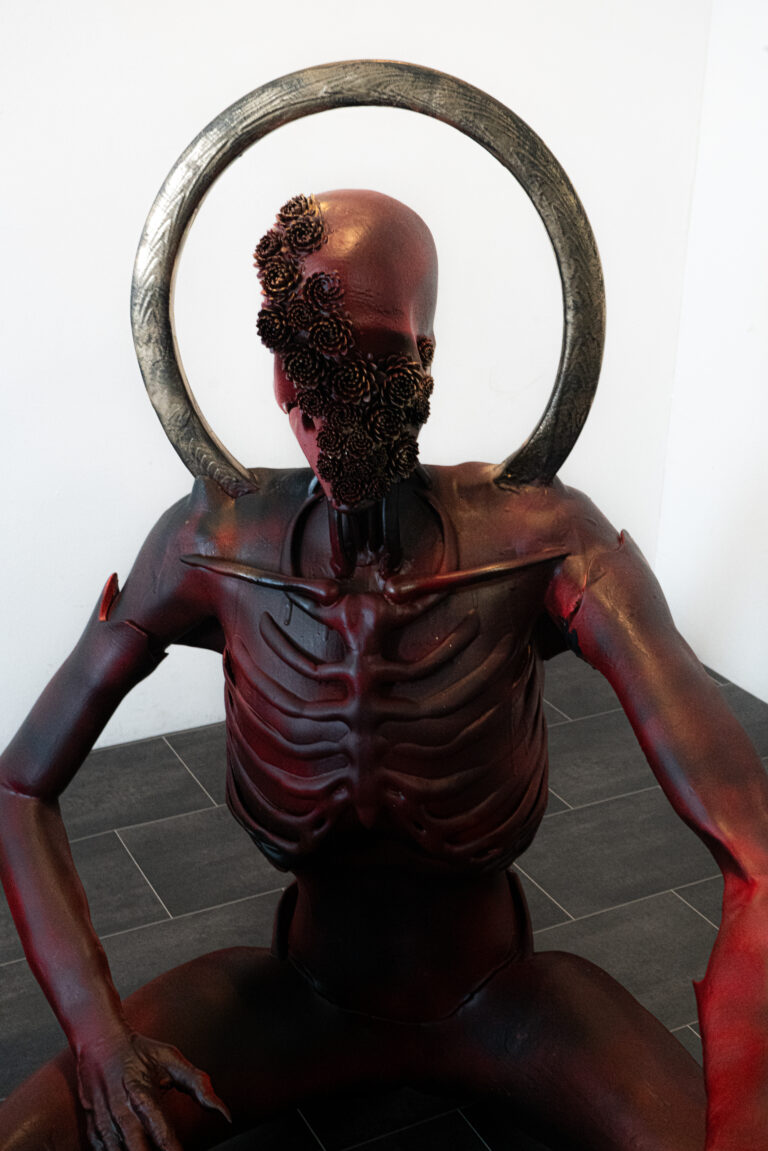Artist Statement
“Proto” is my imagined form of a god—not the deity defined in religious texts, but a being far older, more alien, and unbound by the human need to see itself reflected in the divine.
Raised Christian but now agnostic, I was deeply struck by the biblical descriptions of angels: not gentle, winged beings, but cosmic and monstrous forces beyond comprehension. This sculpture stems from that space—between belief and disbelief, between awe and fear. It is my interpretation of what a god might be if stripped of human projection. It’s not beautiful in the classical sense, but perhaps truer in its unknowability.
The figure is seated in a meditative pose—calm, still, yet haunting. Its head, which I call a Proto Skull, is not a skull in the traditional sense, but a preface to one—an embryonic suggestion of what might eventually become a human face. But there are no eyes, mouth, or ears. Why would a god need them?
Its body reflects the tension of familiarity and otherness. It bears limbs and hands, yet its anatomy is distorted, stretched, and unfinished—bones that seem to pierce the skin, proportions that feel wrong but deliberate. The god is humanoid in outline but fundamentally unknowable in essence.
The entire sculpture was conceived digitally, composed of twenty separate parts, and eventually fused into one. It was realized physically through 3D printing, translating the digital concept into tangible form. This process of fragmentation and unification echoes the sculpture’s own symbolism: the transition from potential to form, from scattered essence to singular presence.
Though deeply personal, “Proto” is not meant to dictate meaning. Embedded within its form are symbolic elements, left deliberately open for interpretation. It invites the viewer to reflect on their own ideas of divinity, of origins, of what it means to believe—or not believe—in something greater than ourselves.

